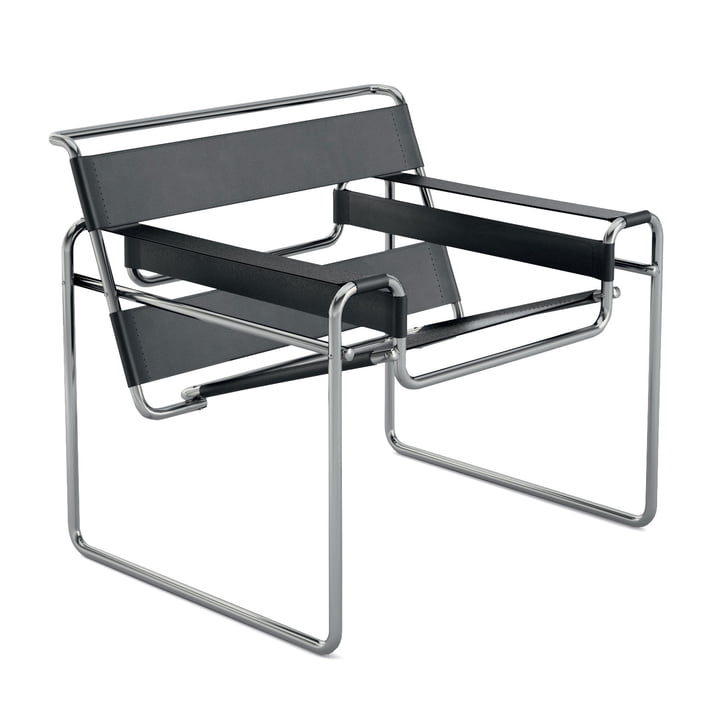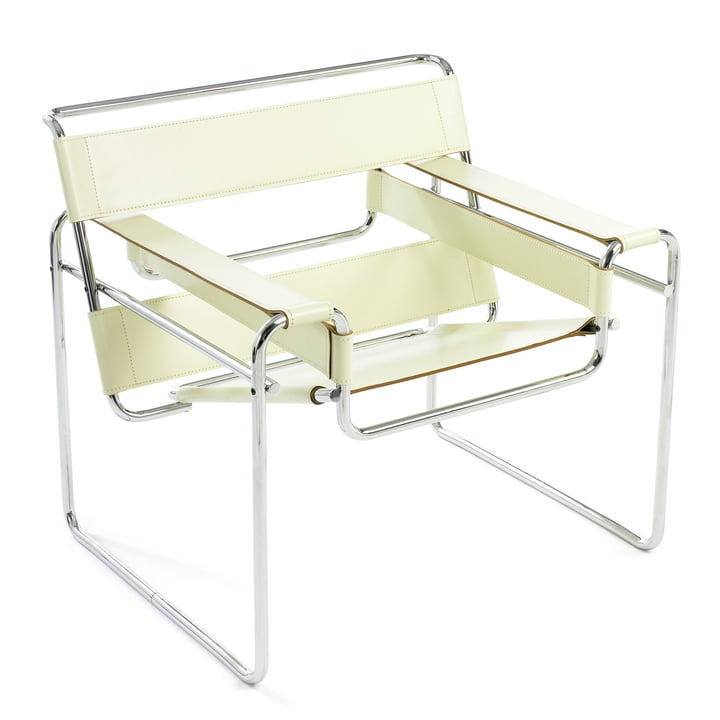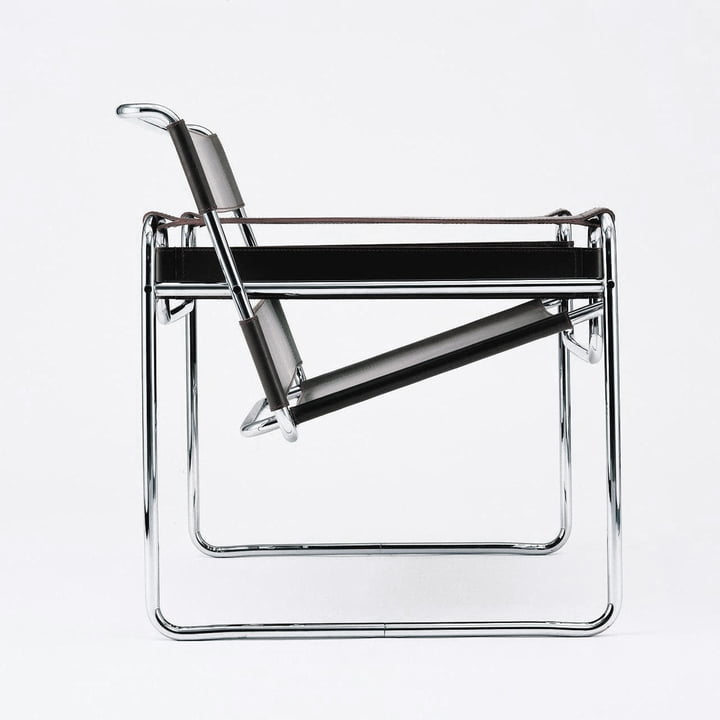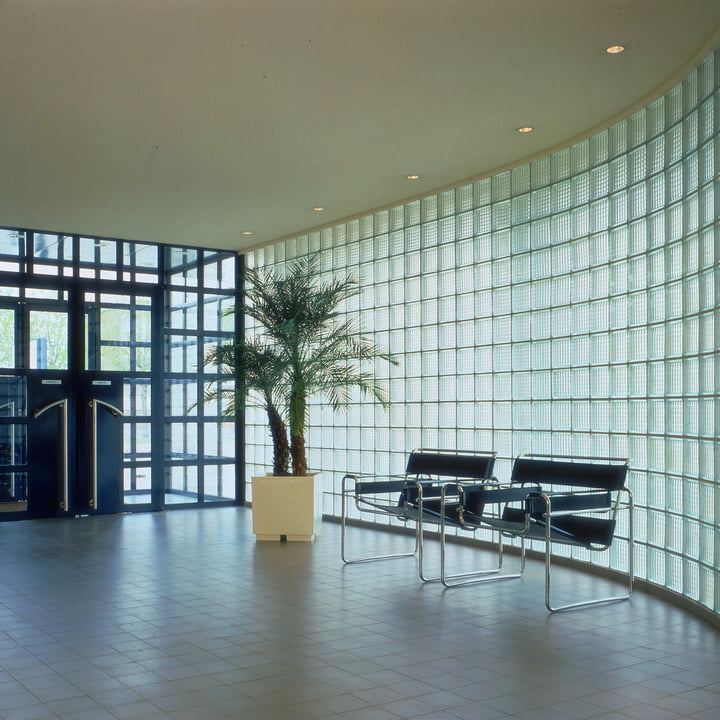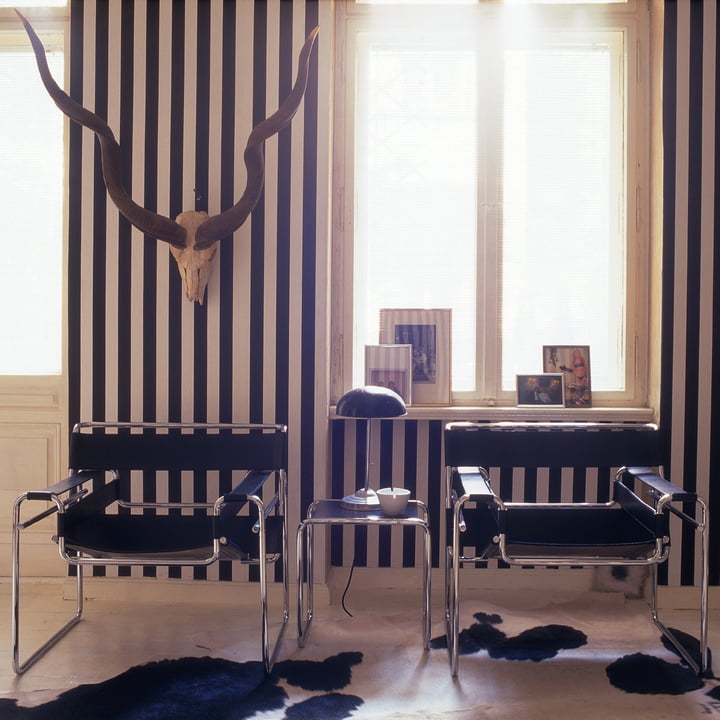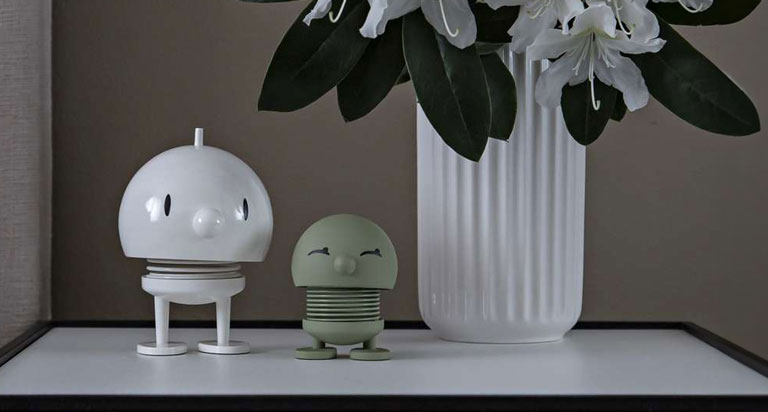Tubular steel armchair by Marcel Breuer
It was admired by lecturers, students and visitors to the Bauhaus in Dessau, where it stood in some of the apartments of the "Meister-Siedlung". And as early as 1926, the year production began, it was praised as a "masterpiece" at an exhibition in the Dresden Kunsthalle. The first tubular steel armchair B 3 by Marcel Breuer - later known as the "club chair" or " Wassily " - immediately attracted a great deal of publicity and played a significant role in the strong interest in the Bauhaus. Ultimately, it was to trigger a worldwide boom in tubular steel furniture, which stood for avant-gardism and the intrusion of industrial aesthetics into the private sphere.
He created a "magic of precision", as one French critic wrote, with the equally new contrast of black and silver, reminiscent of precious jewelry and modern machines. Breuer saw his furniture as "apparatuses of contemporary life". They were to be light, open, inexpensive, dismantlable and hygienic. B 3, which was also available in a folding version and which Breuer had designed in his spare time with the help of a locksmith, fulfilled these criteria. It was based on designs by Gerrit Rietveld, among others.
With the Wassily Breuer did not create an everyday object as hoped, but a new type of furniture and an "abstract-real sculpture" (Siegfried Geidion), whose open geometry reflects the minimalism of the new inventors of form. It became a design icon par excellence, a central symbol of modernism and, not coincidentally, the first piece of furniture to be marketed as a "classic" in the 1960s.
Incidentally, there are numerous myths surrounding the naming of the " Wassily " chair. Some say that it got its name because Wassily Kandinsky was Marcel Breuer's roommate at the Bauhaus. Others, on the other hand, claim that it was named because the chair was a design for the apartment of Wassily Kandinsky's apartment at the Bauhaus in Dessau.
